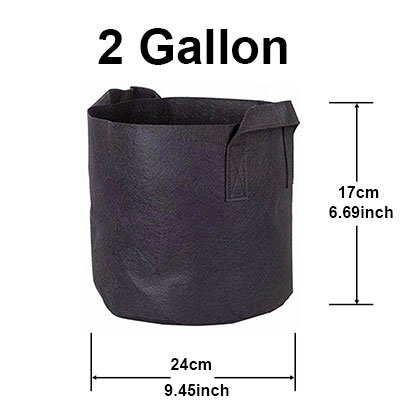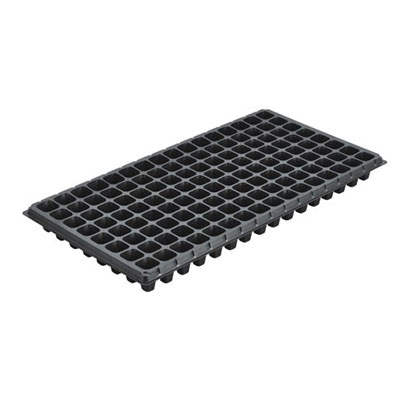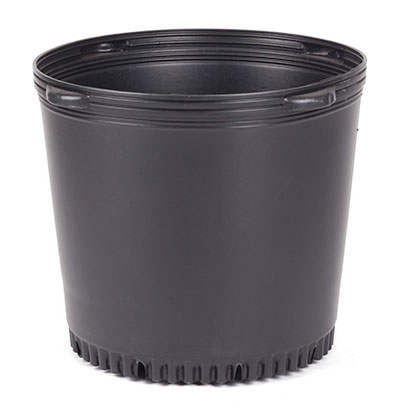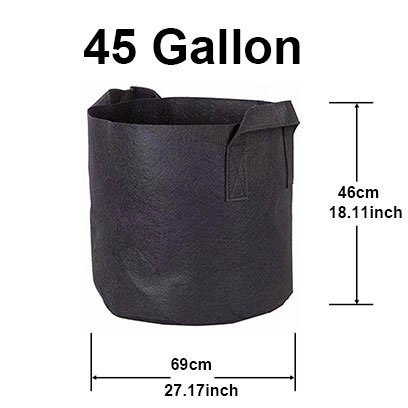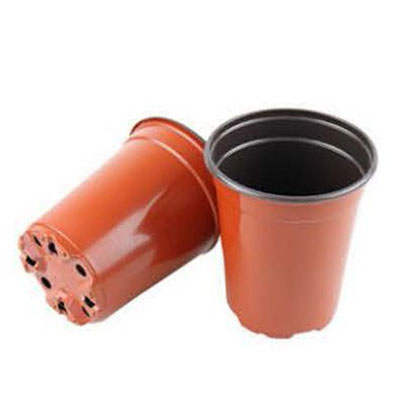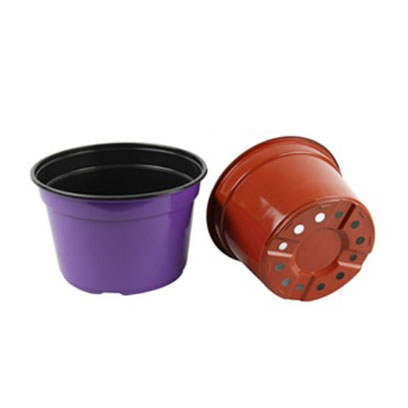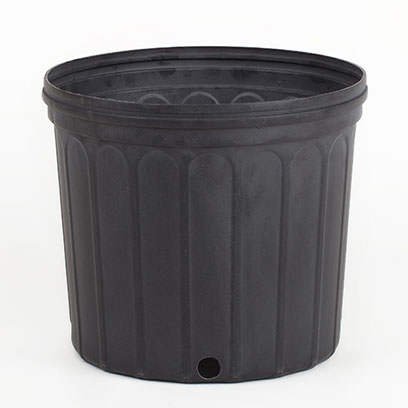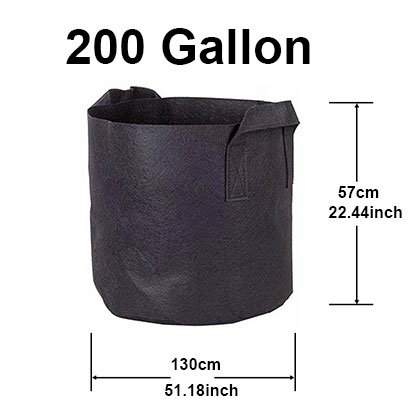Oranges are colorful, sour, sweet and delicious. They are common delicious fruits in autumn and winter. However, in recent years, due to the prevalence of potted plants, many people began to plant oranges in plastic plant pots. How to growing orange trees in pots? Here are the potted orange tree planting methods we carefully arranged for you. Let's have a look.
Cheap Orange Plant Pots Wholesale MOQ:1000pcs! 19 Years Experience Orange Tree Planters Supplier, 35,000m² Workshop Area, Factory Price, Free Samples!
If you want to buy orange plant pots, please click our products: Plastic Gallon Pots or Plastic Terracotta Pots for more information!
1. Orange Planting Environment
Orange tree in pot generally use varieties with strong adaptability, long flowering and fruiting period and good ornamental, such as kumquat, sugar orange, honey orange, four seasons orange, etc. Orange tree is a fruit tree that likes light and temperature. The orange plant pots must be placed in a place with sufficient light and good ventilation to promote plant growth. If it is placed in a place with insufficient sunlight for a long time, the growth of orange plant in pot will become weak, affecting flower bud differentiation and fruit bearing.
As we all know, oranges are fruit trees in the south. They like warm and humid environment. The growth temperature is 12.5 ~ 37 ℃, and the air humidity is relatively high. Potted orange trees are better in loose texture, good structure, organic matter content of 2% ~ 3% and well drained soil. Sunshine can grow normally for an average of 4 to 6 hours a day.
2. Pots for orange tree
Oranges have developed roots. Generally, large orange tree pots with large diameter and drainage holes should be selected. It is better to use round orange pots to facilitate the root system to stretch evenly around. It is best to use orange planter pots with good water seepage and air permeability. When using orange planters of other materials, 5cm thick coarse sand shall be paved at the bottom of the orange plant pots, and a layer of new tiles shall be padded along the inner wall of the orange flower pot to solve the disadvantage of poor air permeability.
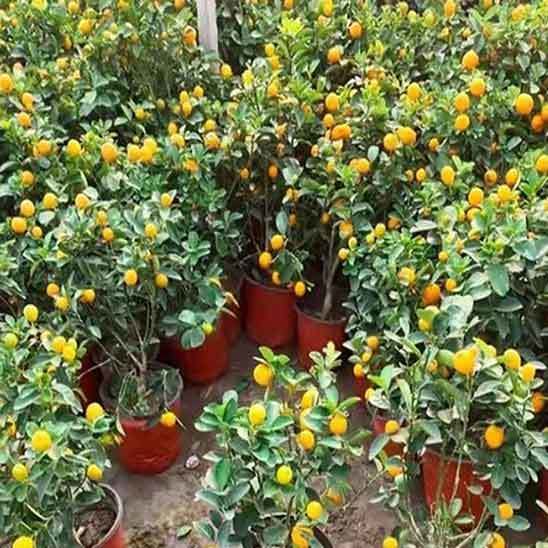
Large orange plant pots are required to meet the growth of fruit trees and be beautiful and firm. Because the tree crown is large and there are many results, large orange planters should be selected, with drainage holes, so as to drain the excess water in time and prevent ponding and rotten roots. Summer is hot and exposed to the sun, which can be slightly shaded. When viewing fruits in winter, place them indoors in the light. Replace the orange planters every two years, mostly in spring. When replacing the orange plant pots, retain some soil mass for root protection, and conduct root grooming, pruning and rejuvenation.
3. Best soil for orange trees
Orange tree does not have strict requirements for soil, but orange tree in pot should reasonably allocate the soil of orange planter pots. Potted orange trees like slightly acidic soil. The best soil for orange trees in pots is generally slightly acidic (pH value is 4.5-7.5) and rich in humus sandy loam or sandy soil.
4 parts of matured pastoral soil, 2 parts of river sand, 1 part of plant ash, 2 parts of premium perlite and 1 part of decomposed organic fertilizer can be used, fully mixed and finely screened. After the pot soil is prepared, mix well and finely, put it in a transparent plastic bag, expose it to the sun for a week for sterilization, and turn it frequently.
4. Planting orange tree in pot
When the orange tree planters and soil are ready, they can be planted. Select healthy seedlings without diseases and pests for planting, and first place 1 ~ 2 thick broken slag, crushed stone or sand at the bottom of the orange tree pots for defecation, drainage and root ventilation. Before growing oranges in pots, apply rotten organic base fertilizer in the orange pots. When repotting orange tree, the seedling root system does not contact the base fertilizer to avoid damaging the root and death of the seedling.
When planting orange tree, the plant should be watered first. When starting the seedling, a certain amount of root fixing soil should be reserved, and the root system should be reduced, but a certain amount of lateral roots should be reserved, which is conducive to absorption. Add a small amount of pot soil and put the seedlings in the center of the orange flower pot to stretch the root system around without bending the root as much as possible.
Then slowly add the soil for orange tree in pot, constantly lift the roots, cover the soil to the root neck, and gently compact the soil with hands to make the soil closely connected with the roots, so that the surface of the pot soil is flat and watered. 2-3 days after transplanting, the soil for orange tree is slightly subsided and compacted, the support rod shall be used to prevent the wind blowing seedlings from hindering the growth of new roots, and the soil of orange plant pots indoor shall be kept moist. The benefits of good ventilation.
5. Watering orange tree
Dwarf orange tree like to be wet. Keep the pot soil moist. Whether there is water or not. If the surface soil in the orange indoor plant pot turns white, it needs watering. Tap the side of the orange plastic plant pots with a clear sound, indicating that the soil is dry and needs watering. Watering should be thorough. It is appropriate to have water seeping from the drainage hole at the bottom of the large orange flower pot. If the soil is too wet, it is easy to cause rotten roots, so it needs to be drained.
5.1 When to watering orange tree
When watering potted orange trees, you need to choose the appropriate watering time. Generally, you can choose to water the plants in the period of vigorous plant growth, so that the plants can absorb enough water. In spring and autumn, it can provide water for the plant in the morning, in summer, it needs to provide water for the plant in the morning, and in winter, it needs to water the plant in the afternoon.
5.2 How often water orange tree
When watering potted orange trees, you also need to pay attention to the watering times. Generally, the plants have different needs for water in different seasons, so the watering times are also different. Generally, orange plant in pot can be watered once a week in spring and autumn, twice a day in summer and once a half month in winter.
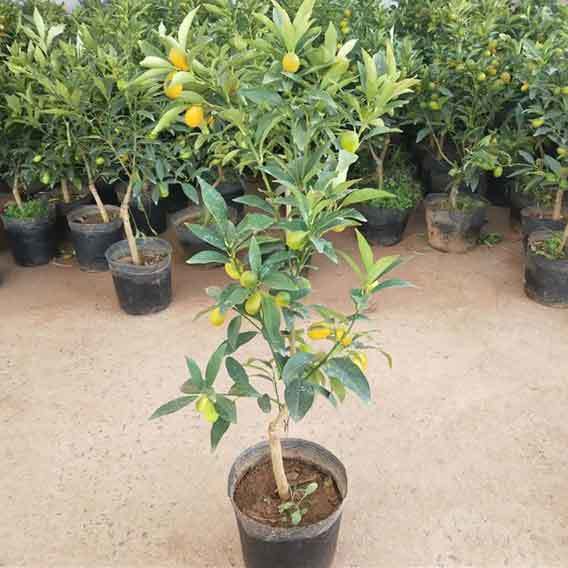
The principle of "see dry and see wet" when watering and "see through" when watering shall be mastered. The tree pots soil is slightly dry during the flowering period. If the young fruit soybeans are large, it can strengthen the fertilizer and water. Oranges like a humid environment. Spray water around the leaves and orange plant pots frequently during the display and viewing period and the peak growth season.
The pot soil is slightly dry during flowering. If the young fruit soybean grain is large, it can strengthen fertilizer and water. Water once a day in summer to keep the soil of the orange planter pots moist. Be careful not to accumulate water. You can often spray water around the leaves and orange tree planters. In spring and autumn, you only need to water once a day; In winter, water once every 3 ~ 4 days. When watering, drop a few drops of vinegar, which is conducive to green leaves and no flowers and fruits.
5.3 How to watering orange tree
When watering potted orange trees, we also need to choose the appropriate watering method. Generally, different watering methods can be selected according to the changes of pot soil. When the soil is dry, the water can be directly poured into the soil to wet all the soil. When the soil is wet, the water needs to be sprayed on the plant to keep the environment moist.
5.4 Water source for orange in pot
Watering orange tree in planter also needs to pay attention to the choice of water source. Generally, tap water is used to irrigate plants, but the chlorine in tap water is unfavorable to the growth of plants. Therefore, when using tap water to irrigate small orange tree in pot, the water needs to be left standing for 1 days. If conditions permit, mineral rich river water can be used to irrigate orange tree in pot.
6. Best fertilizer for orange trees
Urea should be applied as the base fertilizer before planting to promote the growth of oranges. Due to the limitation of pot soil, the nutrient supply of potted oranges is very limited. Usually, thin fertilizer should be applied more. The orange trees in pot were applied with rotten liquid fertilizer before germination, and then applied with liquid fertilizer dominated by nitrogen fertilizer every 7 ~ 10 days to promote the growth of branches and leaves and spring shoots of oranges.
Every time after picking the heart, fertilize in time to promote the branches to mature early. The growth of dwarf orange tree most needs organic fertilizer, such as rotten cake fertilizer and water, which should be applied frequently because of the thin trees, sky and soil. In addition to the fertile soil in the orange plant pots, during the growth period of oranges, some cake fertilizer can be sprinkled in the orange tree planters, so that some fertilizer seeps into the soil every time watering to enhance fertility.
It is necessary to apply nitrogen, phosphorus and potassium compound fertilizer to promote growth. During the growth period, the decomposed fertilizer and water shall be poured once every 7 ~ 10 days, with the concentration of 1 part of liquid fertilizer and 3 parts of clean water. When applying fertilizer outside the root during fruit setting, it is necessary to apply rotten organic fertilizer to increase the rate of fruit setting. 0.3% potassium dihydrogen phosphate plus 0.3% urea can be sprayed once every 15 days for two times to promote the expansion of young fruits and the growth of new shoots.
Applying phosphorus and potassium fertilizer once 25 days before fruit picking can increase the number of fruits and improve the quality. After the fruit is harvested, the ternary compound fertilizer is applied again. After autumn, fertilization is reduced to avoid excessive nutrition of plants, promote autumn shoots, and compete with fruits for nutrients, resulting in fruit drop. Pay attention to fertilizing a small amount of fertilizer for many times. The organic fertilizer must be fully decomposed. The interval between the application of solid fertilizer is generally 1 month.
No fertilizer is applied during fruit viewing in winter. It is also necessary to turn the soil for the orange every six months to ensure that the orange root system has sufficient oxygen respiration and promote the growth of the root system. It is also necessary to replace the orange tree pots soil for oranges every other year to ensure that the fertility of the pot soil is sufficient and can promote the growth of oranges. The pot soil with low fertilizer content should be fertilized more, and the pot soil with high fertilizer content should be fertilized less.
7. Pruning orange trees in pots
Potted oranges have small orange planters, less soil and limited nutrients. If you want to concentrate nutrients on flowers and fruits, you must sparse flowers and reduce fruits, and do necessary pruning. Through pruning, adjust the rational distribution of nutrients in orange trees, so that the limited nutrients are concentrated to supply buds and leaves, and form more fruiting branches, so as to achieve full branches of flowers and fruits.
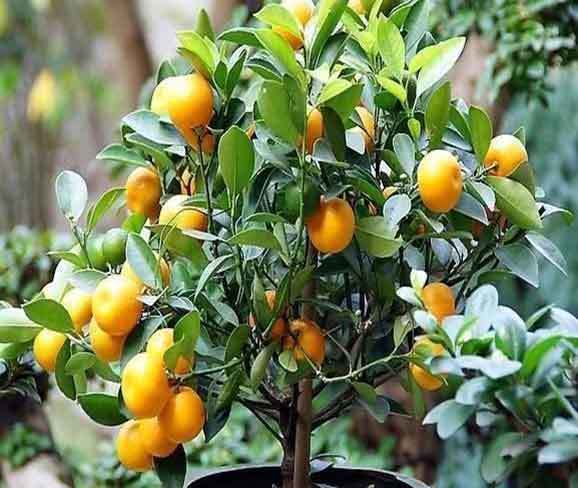
When to prune orange trees? Prune the spring shoots once a year before germination, timely pick the heart, control the height and promote the growth of lateral branches. Cut off some leafless branches, inner bore branches, dense weak branches, etc. to avoid nutrient consumption. For example, some leafless branches, inner bore branches and dense weak branches cannot bear fruit due to poor development. Flowers and branches should be removed. There are also clusters of ethnic flowers.
Only a few well-developed strong flowers can bear fruit. Therefore, oranges must be thinned in time. Therefore, decisively thinning flowers and deleting fruits is to achieve the purpose of protecting flowers and fruits. When the flowers are not in bloom, part of the flower buds shall be spared first; After flower withering and fruit setting, some young fruits in improper positions shall be spared in order to reduce the consumption of nutrients and concentrate the limited nutrients on the retained flowers and fruits, so as to make the orange fruit grow bigger and better.
If the amount of flower buds is small, more flowers can be left, and artificial pollination should be carried out at the same time. In the young tree stage, the long branches can be moderately short cut, and then pruned with their favorite tree shape, which can better establish the tree shape. If you want nice potted orange tree, you need to trimming orange trees from time to time, properly trim the messy branches, maintain the better shape of the orange tree and improve the beauty of the orange tree.
How to trim an orange tree? According to the different requirements of species and varieties, such as upright and drooping, it can shape imaginative tree shapes, such as natural round head shape, tower shape, single branch cliff shape, double branch antler shape, three branch cup shape, weeping willow shape, dragon curve shape, etc., so as to improve its ornamental value. Moreover, we pay more attention to the ornamental value of orange tree in pot. In about 2 years, the orange plant pots and soil shall be changed, and the root system shall be cleaned, trimmed and rejuvenated.
8. Diseases and pests
Common pests of potted oranges include red spider, scale insect, leaf miner, etc., which can be sprayed with chlorpyrifos. The most common diseases are Huanglong disease and anthrax. When these diseases occur, the diseased branches should be cut directly to strengthen soil management and improve the resistance of orange trees.
In fact, orange tree care indoors in the family is not difficult at all, because it belongs to woody plants. As long as we ensure sufficient light, don't lack water and sufficient nutrients, there is basically no problem. We should configure soil with better air permeability as much as possible. Don't choose too large orange tree planters to ensure indoor ventilation, so that basically everyone can raise it.






